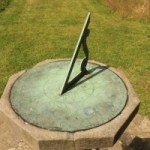 An invention timeline can be described as the path that takes a new process or product from conception to realization. An invention could be based on improving earlier ideas or could be something completely new and unthought of.
An invention timeline can be described as the path that takes a new process or product from conception to realization. An invention could be based on improving earlier ideas or could be something completely new and unthought of.
We, as humans, would never be where we are today with so many objects and processes to make our lives easier had it not been for people inventing things.
By understanding the timeline of an invention, we may realize a greater appreciation for the work and effort that goes into making the every day things we take for granted.
Inventions such as the wheel, the telephone and the airplane have revolutionized the way we travel and communicate. There are two schools of thought when it comes to the process of invention.
One school of thought believes that an excess of resources actually leads to new inventions, while the other school of thought believes that the popular phrase ‘necessity is the mother of invention’ holds true.
Across the expanse of the human timeline, inventions have changed the course of human events – for better or for worse.
Ideas may also not always lead to an invention due to impracticalities. Sometimes an idea may prove to be useless at a certain time but may actually be useful at a later date.
The invention of the parachute, for example, occurred long before the invention of flight. Some ideas may also take a long time to develop due to the progress of technology that is necessary to realize the invention.
Once a person has invented a product, there is a process that he or she must go through in order to commercialize it. In order to protect the invention from being copied, the inventor must patent it.
The timeline of the modern-day invention process begins with the patent application. The first step of the patent process is getting a date attached to the idea or innovation as soon as possible after the idea is conceived. The inventor should write down the concept of their invention and take it to a Notary Public.
The Notary Public will require that you sign and date the document and he/she will witness it. This is done so that there is no conflict if someone later claims the same idea.
Before a patent can be applied for, a patent search will have to be done to ensure that no other patents exist on the idea or product you wish to patent.
In the United States, an experienced and professional patent searcher will have to carry out this search at the US Patent and Trademark Office. In addition, a patent examiner is often consulted on the specific areas to be search for the invention.
Most people apply for provisional patents. This is most cost effective as it gives the inventor a one-year period in which to test the marketability of the product or idea and to see if there is any manufacturer interest in it.
Because new products are always improved and refined, the provisional patent also allows for additions to an invention to be added to the patent without having to file additional applications.
If a manufacturer is interested in a product or idea that is provisionally patented, he/she will generally cover the cost of the full patent in order to protect his/her investment.
It is a long process from the conceptualization of an idea to having an end product manufactured.Very few inventors get the funding needed to refine and develop their ideas. Inventor clubs and associations do, however, exist and can sometimes offer economic resources and services such as mentoring and economic skill development to assist an inventor is realizing his/her dream.
